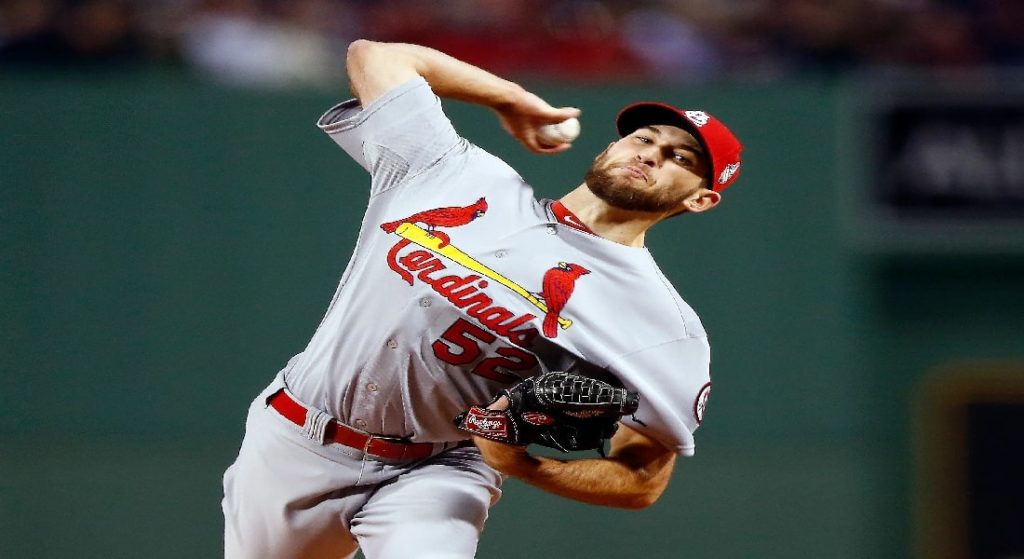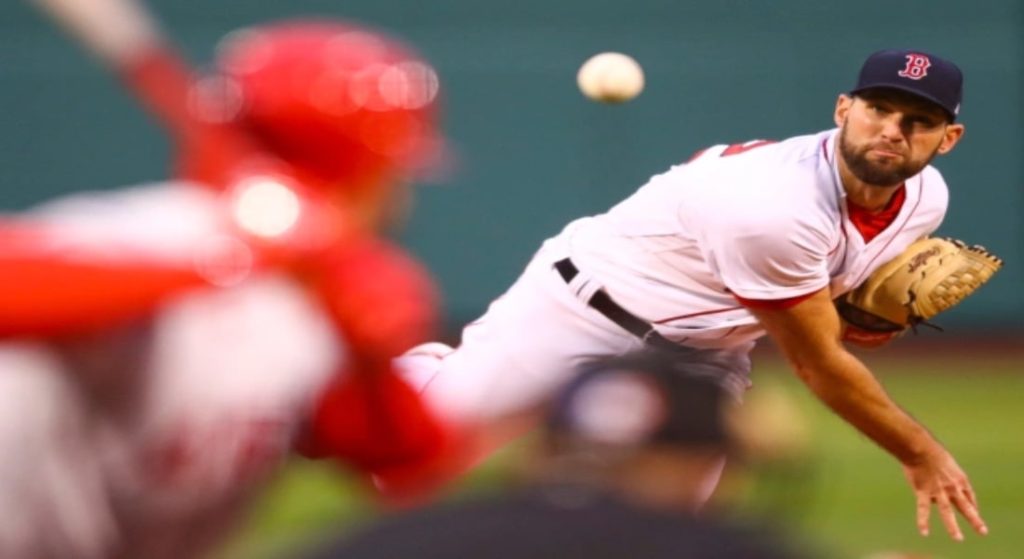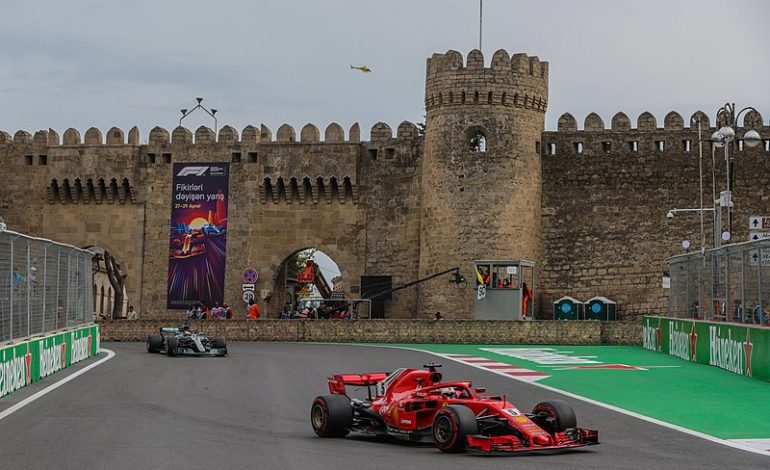Not many Red Sox fans or media pundits believed the Sox would get much of anything from Michael Wacha, who had the eighth-highest ERA from 2016-to-2021. They said $7 million was an overpay for a pitcher who had a 5.05 ERA last season and had not made more than $3 million the past two seasons. Well, Chaim Bloom and Boston’s front office saw something they liked, something the Sox coaching staff could build upon.
Look at him now. Wacha has been indispensable to the Sox, with Chris Sale and James Paxton‘s returns pushed back later than initially expected. Moreover, not only has Michael Wacha been one of the Red Sox’s best starters, but he also has been one of the better starters in Major League Baseball. Boston’s rotation isn’t what it is without him.
Red Sox Getting the Best Version of Michael Wacha in Years

Wacha hasn’t just come out of nowhere, though. The Texas native has been a different pitcher since last August. From August 20th, 2021, through his previous start on Monday against the Los Angeles Angels, he has a 2.51 ERA and 3.59 FIP in 16 starts. In that time, he has only three starts with four or more runs allowed and only four starts with fewer than five innings pitched.
Whatever adjustments Wacha made last season are carrying over to this season, at least through nine starts. Over 49.2 innings so far with the Red Sox in 2022, Michael Wacha has a 1.99 ERA/209 ERA+/3.76 FIP/3.78 xERA with four home runs allowed, a 17.4 percent strikeout rate, and a 7.9 percent walk rate. The former first-round pick of the St. Louis Cardinals has allowed more than two runs once, more than three hits twice, and has walked three batters in a game twice. Opposing batters are hitting .172/.237/.282/.518 against him.
Among MLB starters with at least 40 innings pitched in 2022, Wacha is ninth in ERA, fourth in batting average against, fifth in WHIP (0.91), 10th in hard-hit rate (31.7 percent), 14th in left on-base percentage (83.8 percent), and 24th in barrel rate (5.6 percent). Among Red Sox starters, he has the lowest ERA, batting average against, opponent OPS (.518), WHIP, hard-hit rate, and fewest home runs allowed. Wacha has the second-highest left on-base percentage and second-lowest average exit velocity (88.8 mph).
How Is Michael Wacha Getting It Done?

How is the soon-to-be 31-year-old Michael Wacha succeeding with such low strikeout and whiff rates (10th percentile in whiff rate) and an average fastball velocity of 93 mph? He has limited hard contact (85th percentile in hard-hit rate, 73rd percentile in barrel rate) and kept the ball on the ground (42.3 percent groundball rate) more often than not.
And his fastball/changeup combo has been filthy. Wacha is throwing both pitches 31 percent of the time and is holding opponents to a .188 batting average on the fastball and .118 batting average on the changeup. Though he isn’t striking out many batters or getting a lot of swings and misses overall, hitters are whiffing 30.7 percent of the time and striking out 28.8 percent of the time on the changeup — by far the highest rates of any of his pitches. Furthermore, Wacha is throwing the changeup everywhere in the strike zone, and it has not mattered to this point; hitters aren’t making a lot of contact on it.
Wacha is throwing his cutter again (13.8 percent in 2022 compared to 4.4 percent the last two months of 2021), and it continues to be his worst pitch. Opposing hitters are batting .348 against it. The sinker has been good too, and the curveball has been ok, nothing special.
Michael Wacha Has Been Great, But Regression Is Coming

Despite Michael Wacha’s early-season success, there are numerous warning signs that some sort of regression is looming. For one, low whiff and strikeout rates mean contact, which, in Wacha’s case, turn into softly hit groundballs to a much improved Red Sox infield. That formula leads to a meager .188 batting average on balls in play. Wacha’s career average BABIP allowed is .298. Second, Wacha has a .254 expected batting average, .422 expected slugging percentage, and .322 expected weighted on-base average against him in 2022. Third, his expected ERA is nearly two runs higher than his actual ERA.
The above numbers suggest a version of Michael Wacha with which the Red Sox would still be more than happy: a five-to-six-inning pitcher with a 3.5-4 ERA that limits hard contact. However, the question is, will the Red Sox have the luxury (i.e., Chris Sale is back, and the Sox have added another starter) of moving Wacha to the bullpen before, or not too much after he becomes that pitcher?
For daily Red Sox coverage, follow me on Twitter. For more MLB coverage, in addition to Red Sox coverage, make sure to follow @BellyUpBaseball and check out Belly Up Sport’s other MLB content.







1 Comment
Great article!